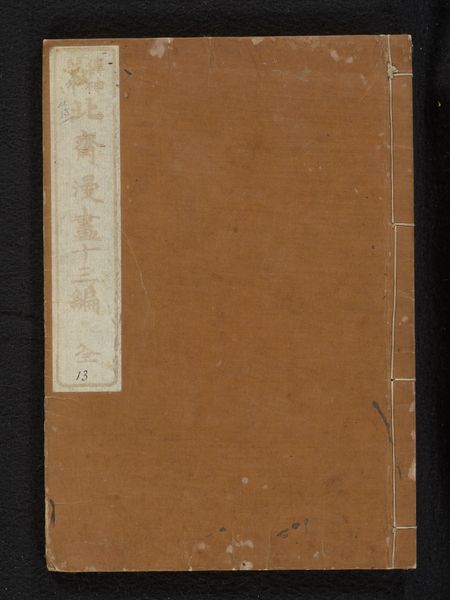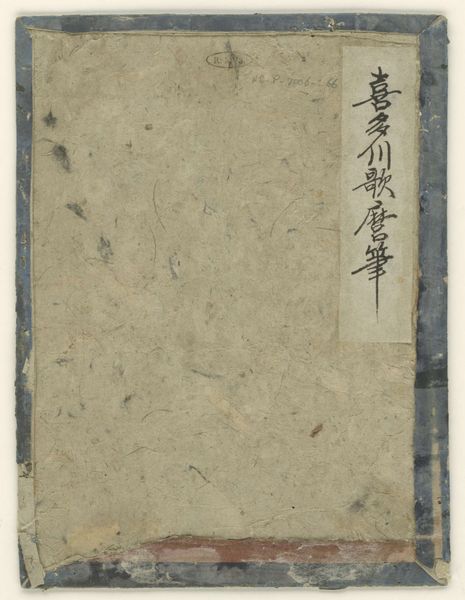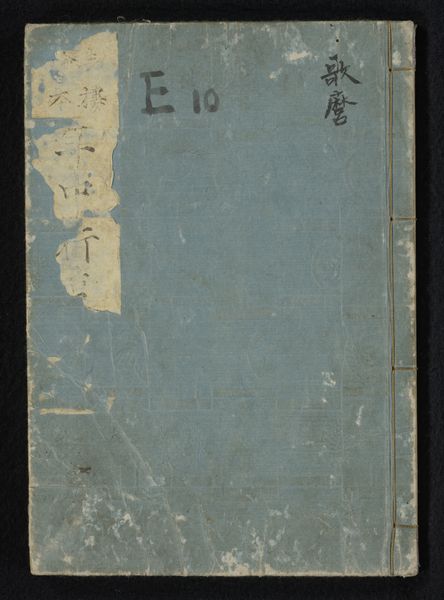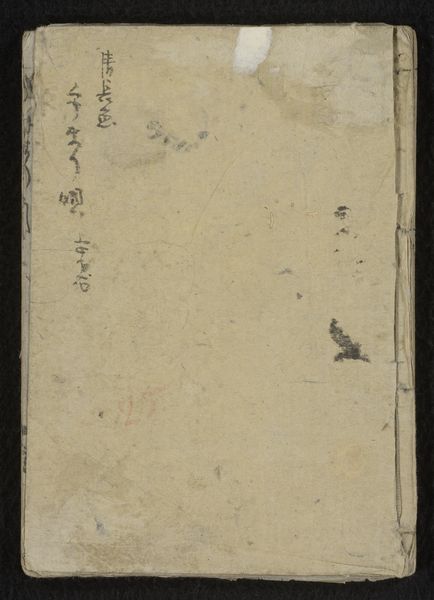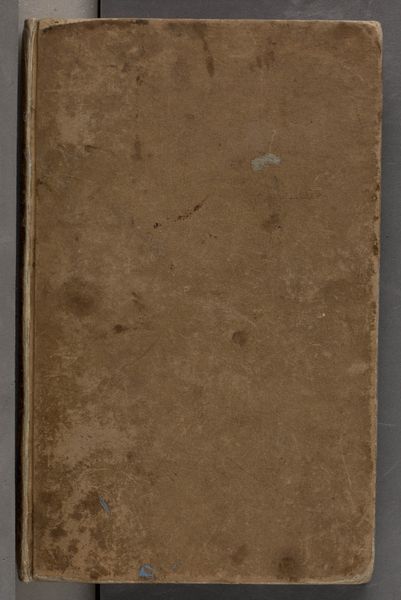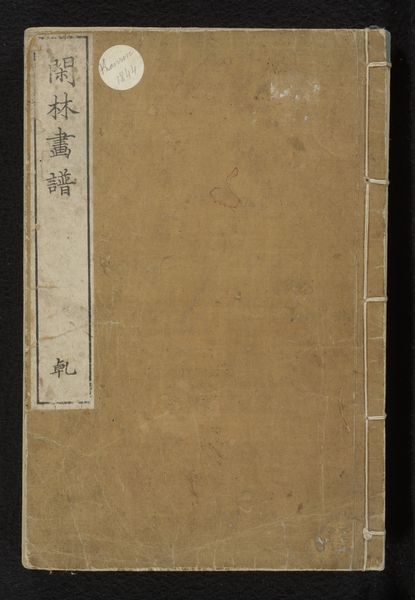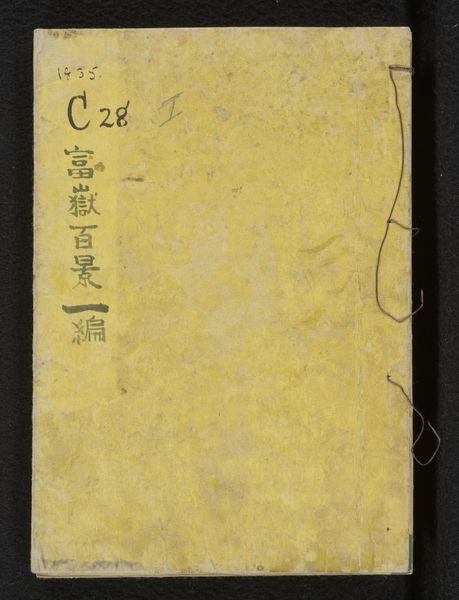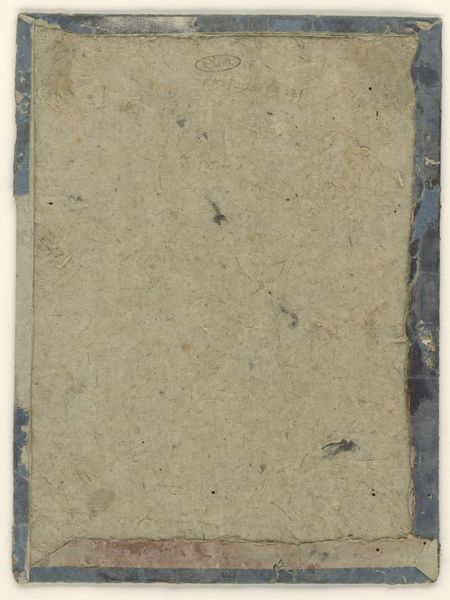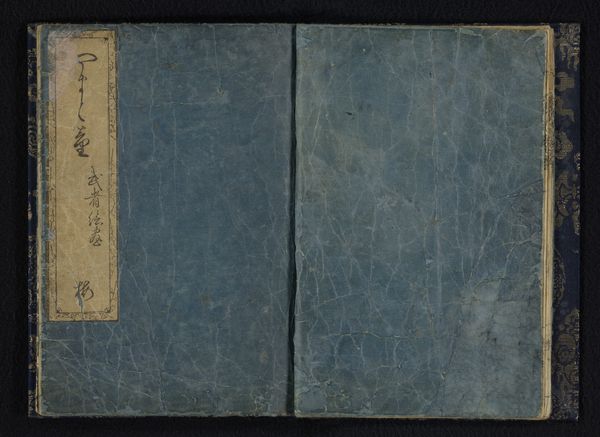
drawing, print, paper
#
drawing
# print
#
asian-art
#
ukiyo-e
#
paper
Dimensions: height 225 mm, width 156 mm
Copyright: Rijks Museum: Open Domain
Editor: We're looking at "Sketches by Hokusai - Part 9," dating from sometime between 1819 and 1878. It's a drawing and print on paper by Katsushika Hokusai, held at the Rijksmuseum. It’s such a simple, almost humble cover, and gives away so little of the treasures it must hold inside! What can you tell me about this particular volume within the broader context of Hokusai’s work? Curator: Well, the very title, "Manga," gives us an important clue. Although now a global phenomenon, the term "manga" in this context really reflects Hokusai's intention: sketches that are unbound and readily accessible. Think about the context of 19th-century Japan: this wasn’t necessarily high art for an elite audience, but rather something aimed at a broader public, potentially artisans or those learning to draw. Does seeing it like that change how you view its simplicity? Editor: It does. It’s easy to fall into the trap of seeing anything in a museum as inherently "high art," but this was intended as more of a practical guide, or even popular entertainment? Curator: Precisely! Hokusai's "Manga" subverted those expectations, and the Rijksmuseum showing this print does as well! It challenges established notions of what constitutes art worthy of preservation and study. Also, consider the political undercurrent - the rise of a merchant class with increasing cultural influence perhaps played a part in both the creation and reception of works like this? Editor: That’s a fantastic point. So, it's not just about the art itself, but the shifting social landscape that allowed it to flourish? The printing itself had to have contributed in disseminating it throughout Japan, and possibly other parts of the world! Curator: Absolutely! The very act of printing – its affordability and wide reach – challenges ideas about the exclusivity of art. This small book had quite the big social impact! Editor: I never would have considered the social impact from this book! Thanks for shifting my perspective on what constitutes art in the public sphere! Curator: My pleasure! It's all about understanding art as a reflection of and a participant in the society that creates it.
Comments
No comments
Be the first to comment and join the conversation on the ultimate creative platform.
